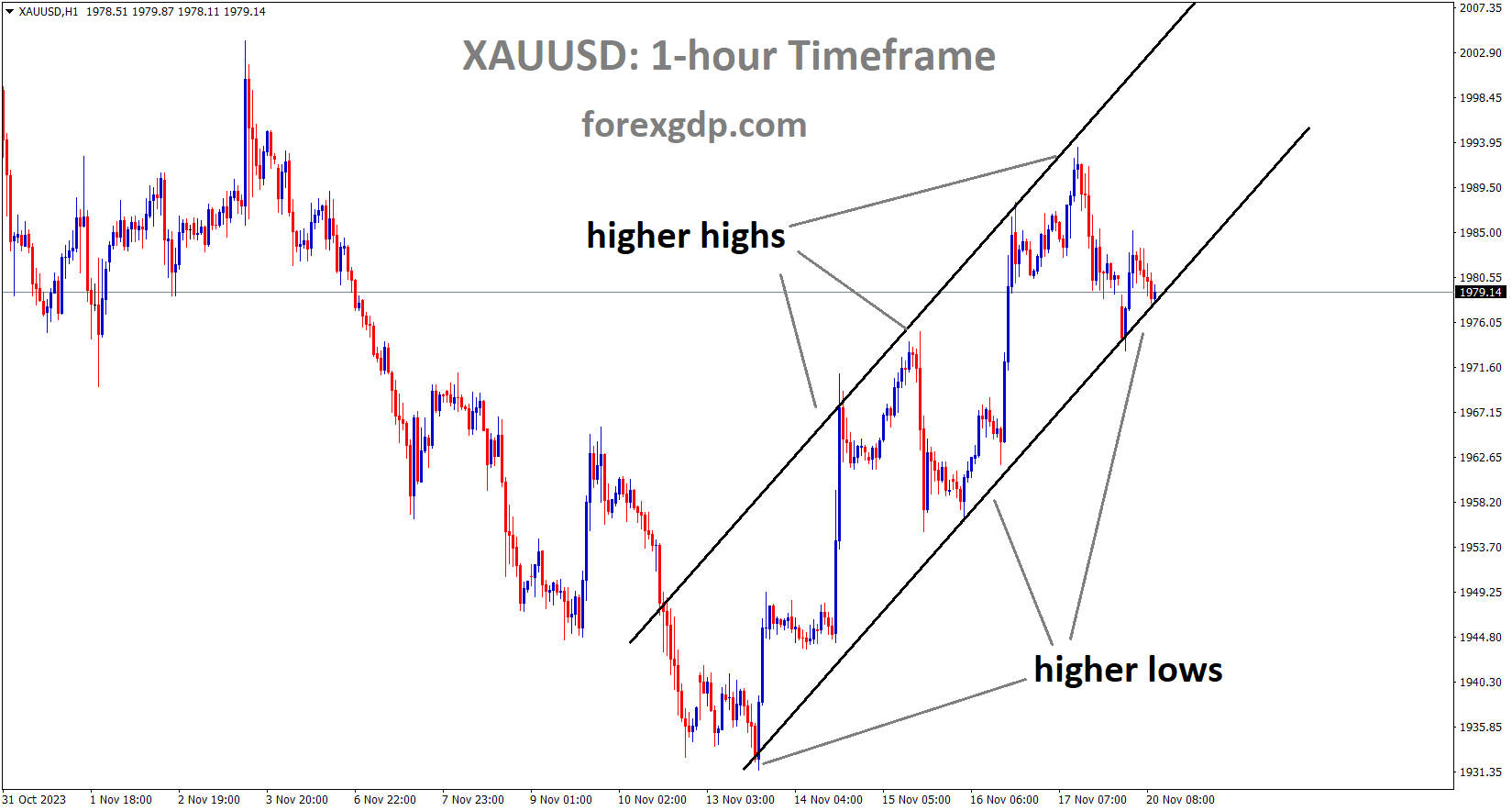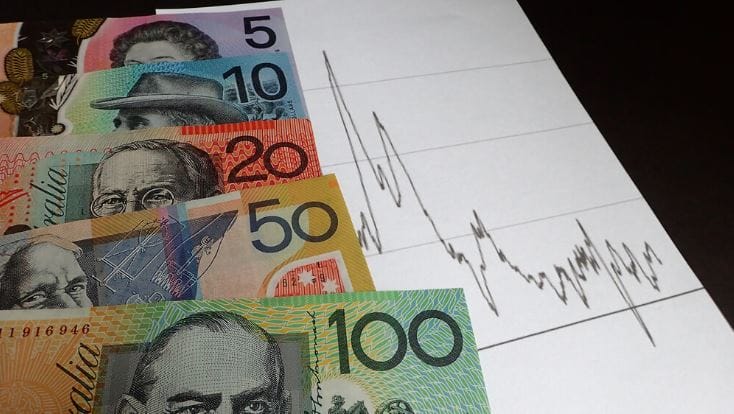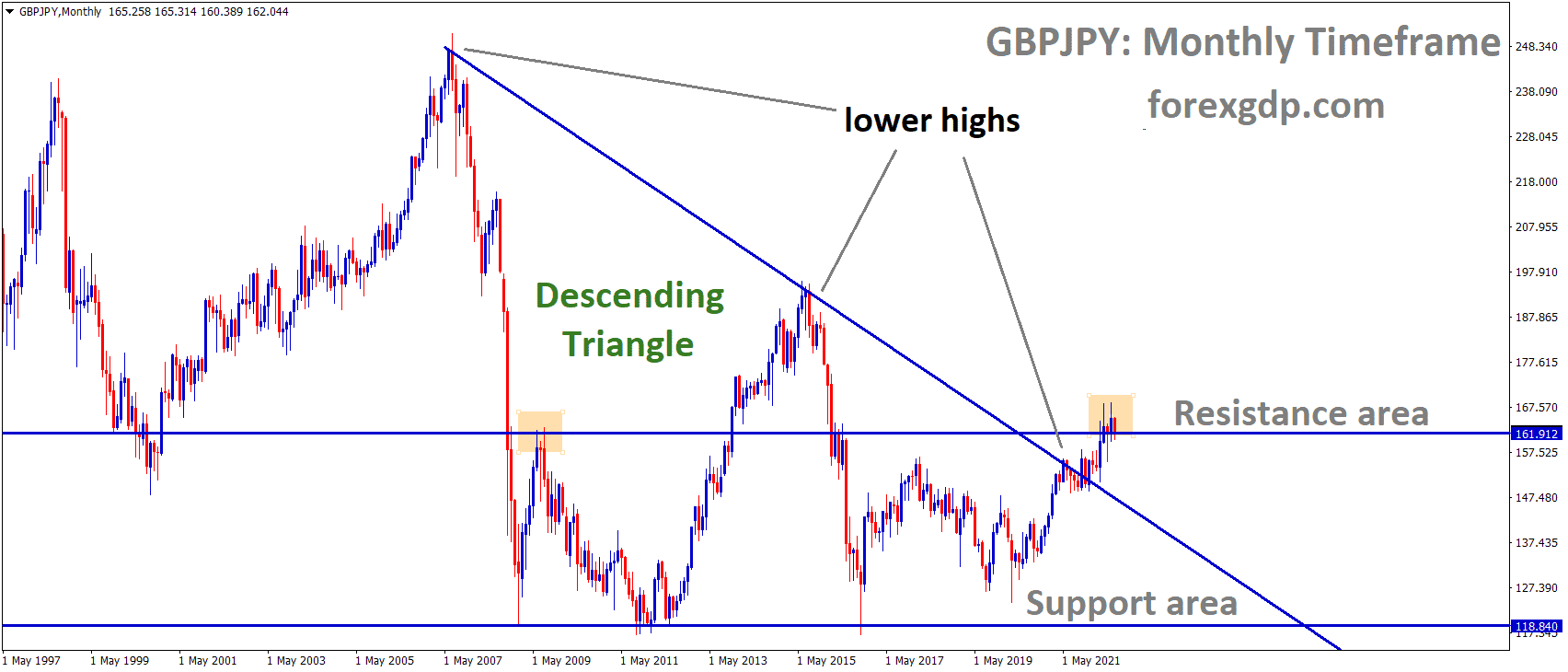GOLD Analysis:
XAUUSD Gold price is moving in an Ascending channel and the market has reached the higher low area of the channel
The Federal Reserve is inclined to maintain interest rates at their current level during the December meeting, causing a further rise in gold prices in the market.
The latest optimism surrounding potential stimulus measures from China is bolstering investor confidence and serving as a key factor limiting gains for the safe-haven precious metal during the early European session. However, the downside is mitigated by expectations of a dovish stance from the Federal Reserve. Investors are increasingly convinced that the US central bank will maintain its current policy during the December 2023 meeting. Furthermore, market expectations now include the possibility of the Fed initiating interest rate cuts as early as March 2024, contributing to the US Dollar’s decline to its lowest level since August 31.
Additionally, the deteriorating global economic outlook and geopolitical risks are providing some support to the safe-haven Gold price. Traders, however, may adopt a cautious approach, refraining from aggressive directional bets, as they await the release of the FOMC meeting minutes scheduled for Tuesday. These minutes will be closely scrutinized for insights into the path of interest rates and policymakers’ perspectives on whether the US Central Bank should raise rates again this year. This analysis will play a pivotal role in influencing USD price dynamics and offering fresh momentum to the non-yielding Gold price.

Gold prices are persistently buoyed by growing expectations that the Federal Reserve (Fed) will refrain from hiking interest rates, particularly as recent indicators suggest the end of concerns about elevated prices. Last week’s US CPI report indicated a faster-than-anticipated cooling of consumer inflation, while Thursday’s US Jobless Claims suggested a moderation in the labor market. Market sentiment is now aligned with the belief that the Fed will maintain rates during its December 2023 policy meeting, with nearly 100 basis points of rate cuts being priced in by the end of 2024. This shift in expectations for the Fed’s future policy has led to a decline in the benchmark 10-year US Treasury yield to a two-month low, benefiting the non-yielding metal.
The US Dollar’s decline to its lowest level since September is another factor supporting XAUUSD ahead of the FOMC minutes release on Tuesday. The escalation of violence between Israel and Palestine has raised concerns about its potential impact on the global economy and, in a worst-case scenario, could lead to a recession.
Contrary to reports suggesting a potential breakthrough in negotiations, Israel and the US have rejected proposals to release some of the 240 hostages in Gaza in exchange for a five-day pause in the conflict. The People’s Bank of China has maintained its Loan Prime Rate (LPR) near record lows, as expected, and injected approximately 80 billion Yuan of liquidity into markets. Chinese regulators have also pledged additional policy support to the beleaguered real estate sector, boosting investor confidence and capping the safe-haven appeal of XAUUSD.
SILVER Analysis:
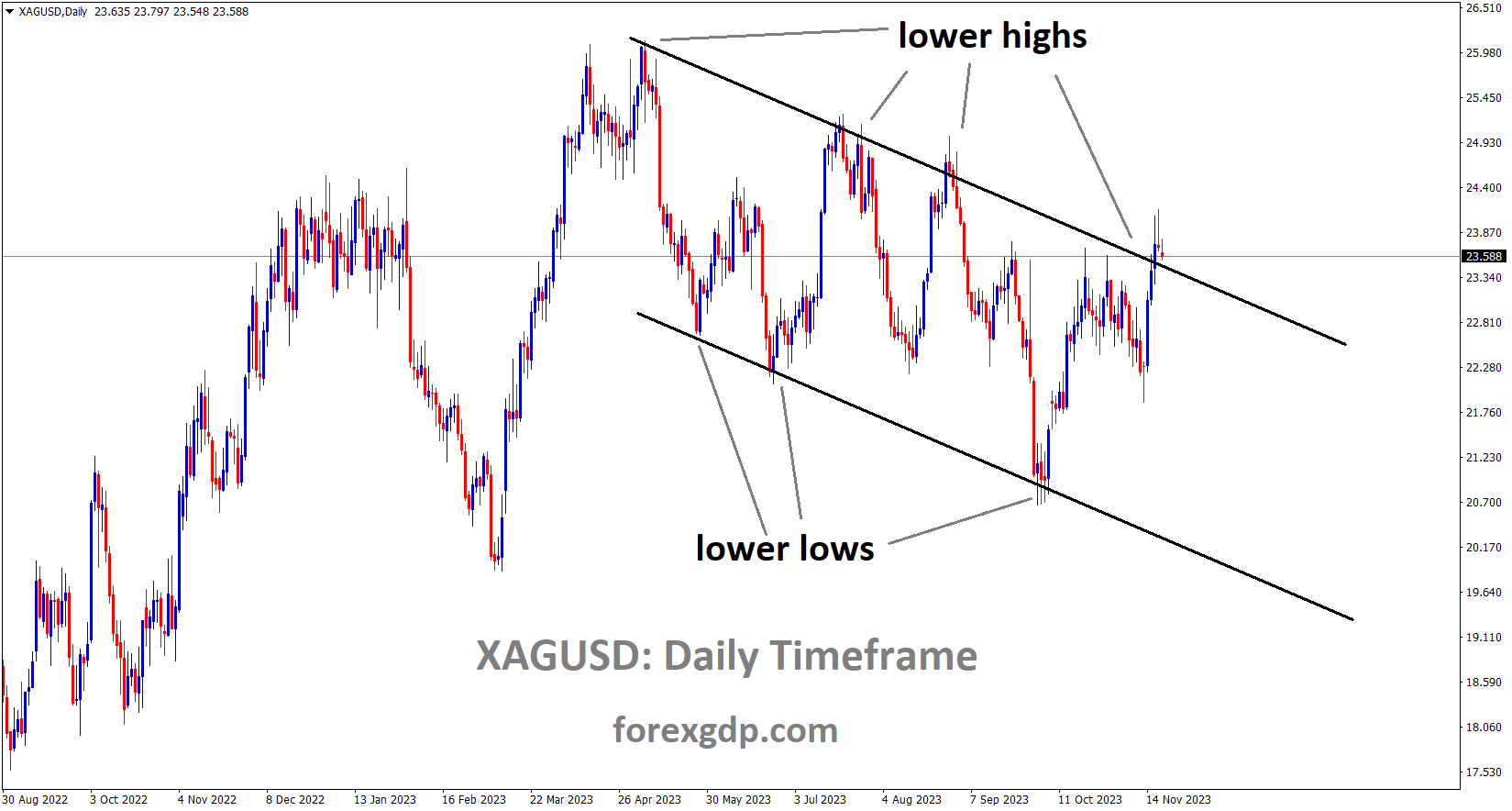
XAGUSD Silver Price is moving in the Descending channel and the market has reached the lower high area of the channel
Last week, domestic data in the United States fell below expectations, resulting in the US Dollar’s inability to rally and a subsequent market downturn.
The US Dollar Index experienced a decline, reaching 103.90, concluding a week marked by a 1.60% loss. The Greenback’s downturn was primarily attributed to soft inflation figures and weak economic activity data in the United States. As signs of inflationary pressures and a cooling labor market emerged in the US, the market sentiment favored the notion that the Federal Reserve has concluded its hiking cycle, leading to a weakening of the US Dollar throughout the week. Looking ahead to the next week, the US is set to release Durable Goods figures for October and S&P PMIs for November.
The US Dollar Index continued its descent towards 103.90 during the week, significantly impacted by reports of soft inflation figures and weak economic activity. The US Bureau of Labor Statistics revealed that October’s Core Consumer Price Index fell below expectations, registering at 4% YoY instead of the anticipated 4.1% and decelerating from its previous reading of 4.1%. The headline figure was 3.2% YoY, below the consensus of 3.3% and lower than the previous reading of 3.7%. Additionally, the Core Producer Price Index for October failed to meet expectations, recording 2.4% YoY compared to the expected 2.7% and declining from the previous reading of 2.7%. On a positive note, Retail Sales for October outperformed expectations, showing a 0.1% MoM decline against the anticipated 0.3% decline.

In the week ending November 11, US Initial Jobless Claims increased to 231,000, surpassing the predicted 220,000. Industrial Production in the United States fell short of expectations, experiencing a 0.6% MoM decline, higher than the anticipated -0.3%. It also recorded a YoY decrease of 0.7%. However, Housing Starts and Building Permits for October surpassed expectations.
Susan Collins from the Fed stated that she wouldn’t rule out further tightening, emphasizing that decisions would depend on incoming data. US Treasury yields saw a slight increase, with the 2-year rising to 4.90%, while the 5 and 10-year rates increased to 4.45% and 4.44%, respectively. According to the CME FedWatch Tool, the probability of a 25-basis-point hike in December is currently zero. Market expectations are leaning towards rate cuts, potentially appearing sooner than anticipated, with bets on May 2024 or even March.
USDJPY Analysis:
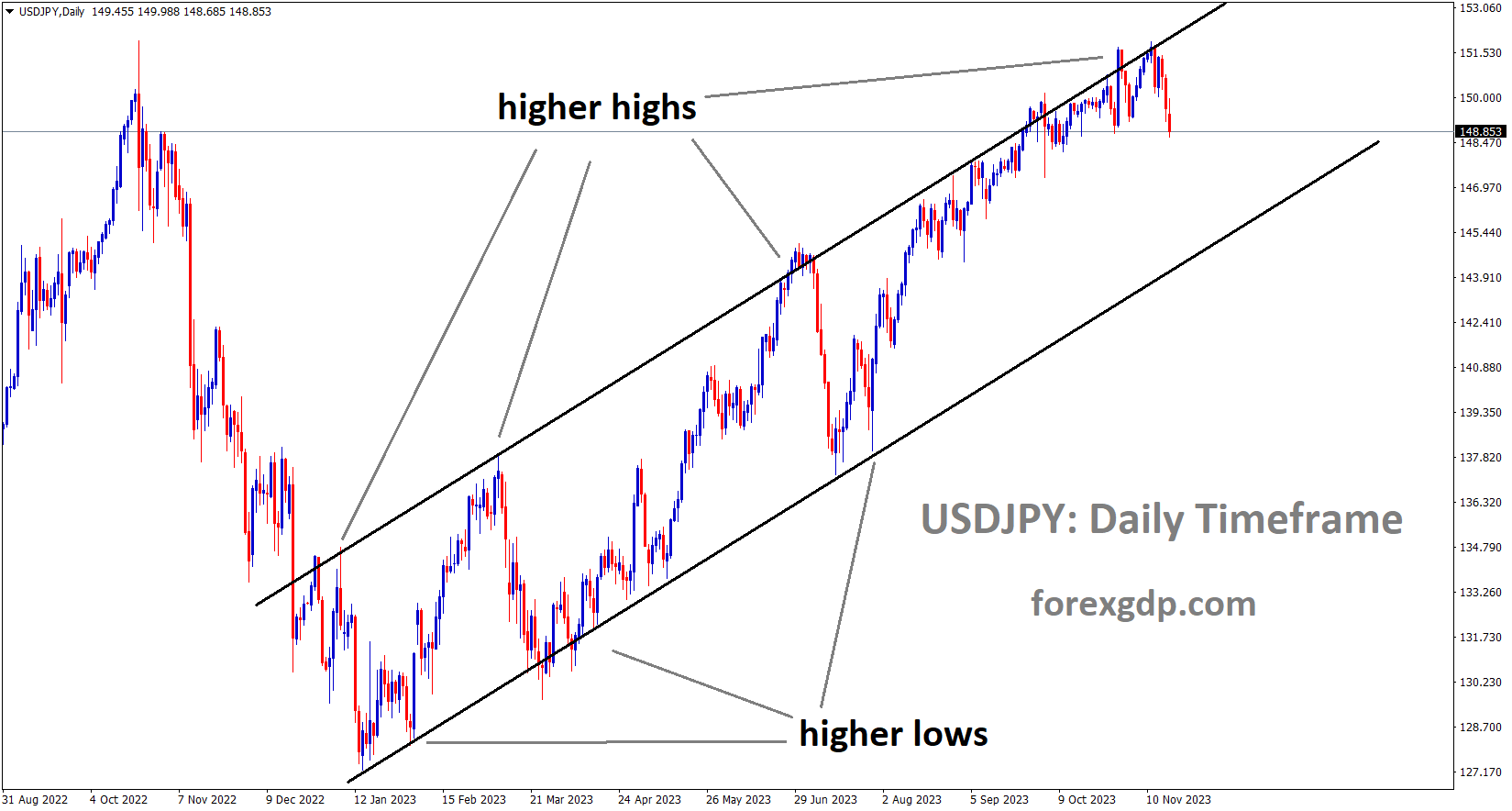
USDJPY is moving in an Ascending channel and the market has fallen from the higher high area of the channel
Last week, Governor Ueda of the Bank of Japan stated that the era of accommodating monetary policies will conclude once sustainable wages and inflation targets are met within the Japanese economy. Regarding intervention in FX pairs, Finance Minister Akazawa emphasized that it is not intended for speculation; rather, it aims to counteract volatility and stabilize prices.
Recent statements from Bank of Japan Governor Ueda and Japan’s Finance Minister Akazawa suggest that the Japanese Yen could face further downside. Both officials mentioned a potential reconsideration of Yield Curve Control and negative interest rates, contingent on achieving stable and sustainable inflation hitting the target. However, they emphasized the need for caution in communicating potential policy changes to avoid unintended consequences in the markets. The timing of any shift from the ultra-easy policy remains uncertain, and there is no specific foreign exchange level in mind for intervention, with a focus on curbing excess volatility rather than intervening solely based on yen weakening.

These statements underscore Japan’s careful approach amid various global uncertainties, including the Federal Reserve’s stance, geopolitical tensions, and China’s economic growth. Adapting monetary policy will require the Bank of Japan to navigate multiple unpredictable factors.
Looking ahead, if US durable goods orders take a negative turn in the coming days, the US dollar may experience pressure. From the USDJPY perspective, Japanese inflation becomes crucial in influencing BOJ policy decisions. The central bank has consistently emphasized the necessity of sustained inflation above the 2% target before contemplating policy adjustments. With forecasts indicating a potential rise in inflation, this could prompt the BOJ to consider easing policy measures in the future.
USDCAD Analysis:
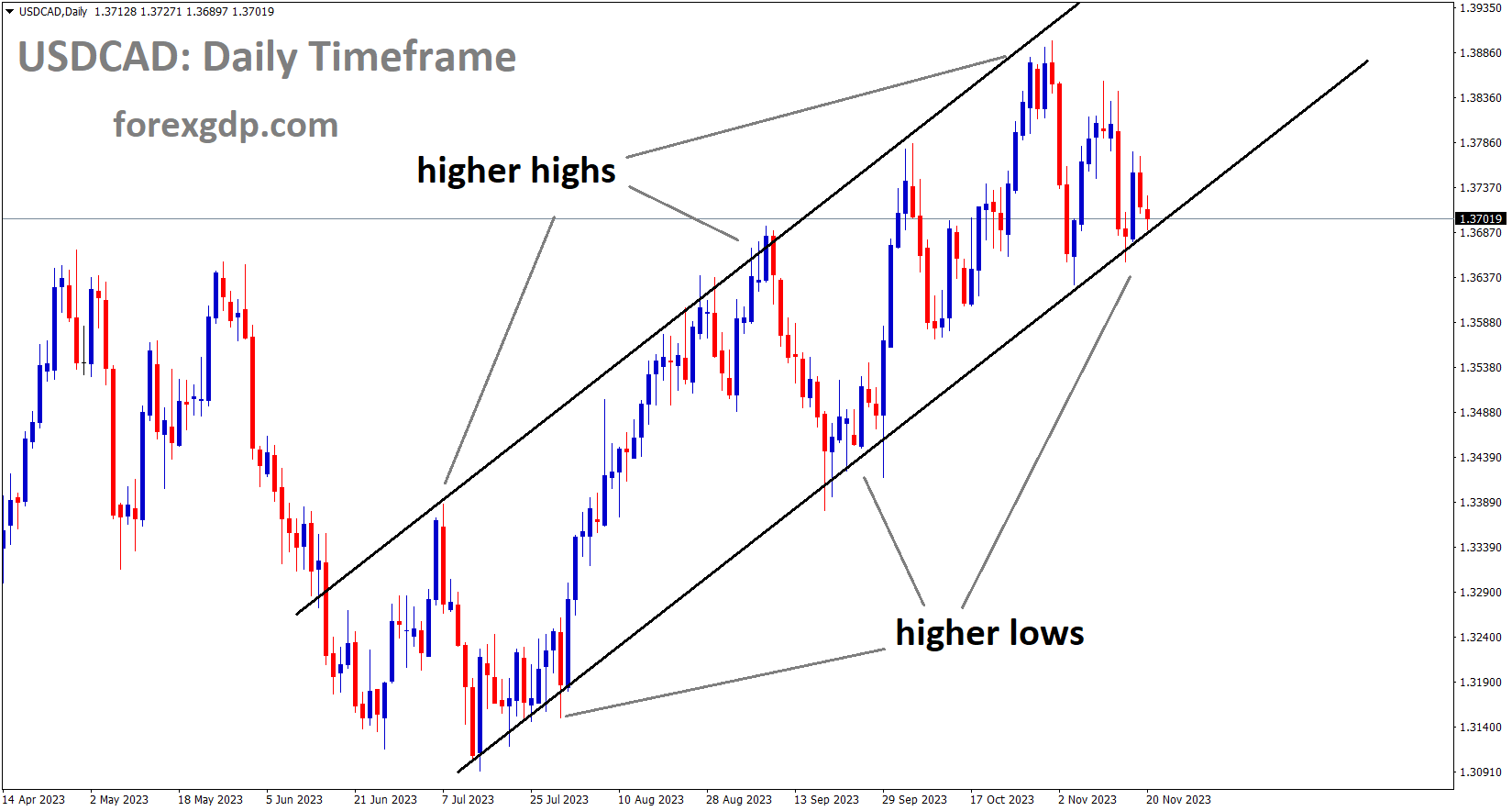
USDCAD is moving in an Ascending channel and the market has reached the higher low area of the channel
The Bank of Canada has maintained interest rates due to the decline in oil prices. With cooling inflation and other economic indicators trending downwards, the Canadian Dollar has weakened against its counterparts.
Saudi Arabia expresses its intention to reduce daily oil production by 1 million barrels per day, as reported by the Financial Times. However, there are doubts about the practicality of this plan. The ongoing war conflict is cited as a factor contributing to stabilizing oil prices, in accordance with statements from Saudi Arabia.
Last week, Federal Reserve officials reiterated their stance on the monetary policy outlook. Boston Federal Reserve President Susan Collins emphasized the Fed’s commitment to reducing inflation without causing significant harm to the labor market, advocating a patient approach to future interest rate moves. Concurrently, Fed President Austan Goolsbee expressed confidence that inflation would align with the Fed’s target as long as pressures on house prices decrease. Market sentiment suggests a belief that the Fed has concluded its hiking cycle, with expectations of monetary policy easing commencing in May 2024.

Earlier this month, the Bank of Canada signaled the likely end of the era of historically low-interest rates, cautioning households and businesses to anticipate higher borrowing costs. Additionally, a potential rebound in oil prices could positively impact the commodity-linked Canadian Dollar, given the country’s position as a leading oil exporter to the United States. Traders will closely monitor key events this week, including the release of the Federal Open Market Committee Meeting Minutes and the Canadian Consumer Price Index for October on Tuesday. Wednesday will see the unveiling of US Durable Goods Orders for October and the Michigan Consumer Sentiment Index for November, while Friday will bring the release of S&P Global PMI data. These data points will influence trading opportunities around the USDCAD pair.
Saudi Arabia, the world’s leading oil exporter, is considering an extension of oil production cuts into the next year. The plan is to continue reducing output by 1 million barrels per day, at least until the spring, in response to declining prices and heightened tensions over the Israel-Hamas conflict. This information comes from sources cited by the Financial Times after oil prices reached a four-month low of $72.35 per barrel last week.
USDCHF Analysis:
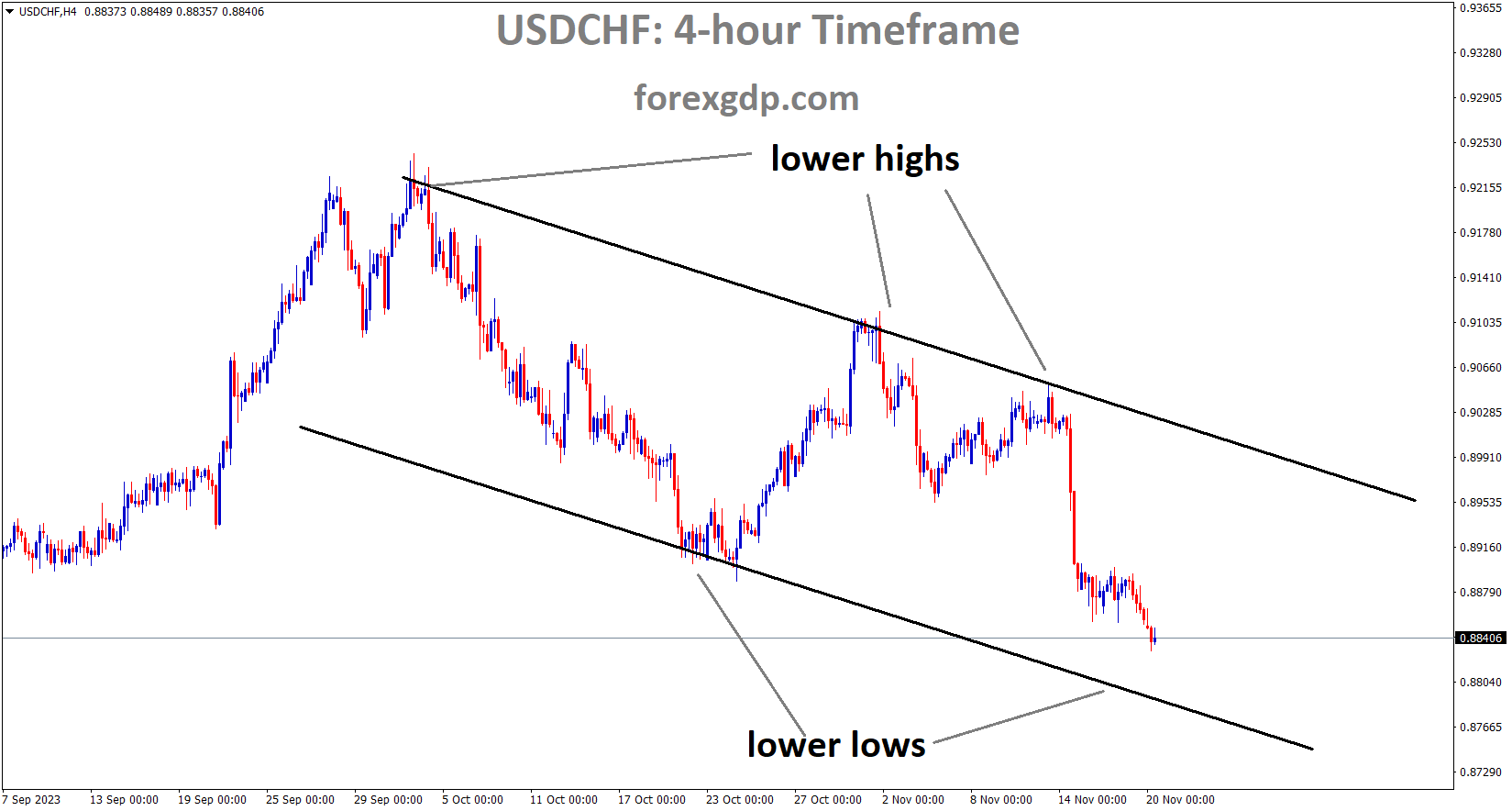
USDCHF is moving in the Descending channel and the market has reached the lower low area of the channel
Swiss industrial production for Q3 exceeded expectations, registering at 2.05%, surpassing the forecast of -0.70% and the previous quarter’s figure of 0.80%. This positive outcome suggests potential strength for the Swiss Franc against its counterparts.
The USDCHF pair is under downward pressure as market signals suggest a cooling labor market in the United States. This perception implies that the Federal Reserve may have concluded its hiking cycle, resulting in a decline in the US Dollar’s strength over the past week. Despite this, Bank of America holds the view that Fed Funds rates will remain elevated for an extended period, identifying potential upside risks. The revised forecasts project higher rates across the yield curve, with a 10-year US Treasury yield expected to reach 4.25% by the end of 2024. While BoA’s forecasts align slightly below market forwards, they surpass consensus estimates, particularly towards the end of 2024. The 2-year yield forecasts suggest a potential for a higher cutting trough compared to the baseline in US economics. The US Dollar Index continues its decline, currently trading around 103.70, reflecting pressure on US bond yields. The 2-year Treasury yield is lower, bidding at 4.88% at the time of writing.
GBPCHF Analysis:
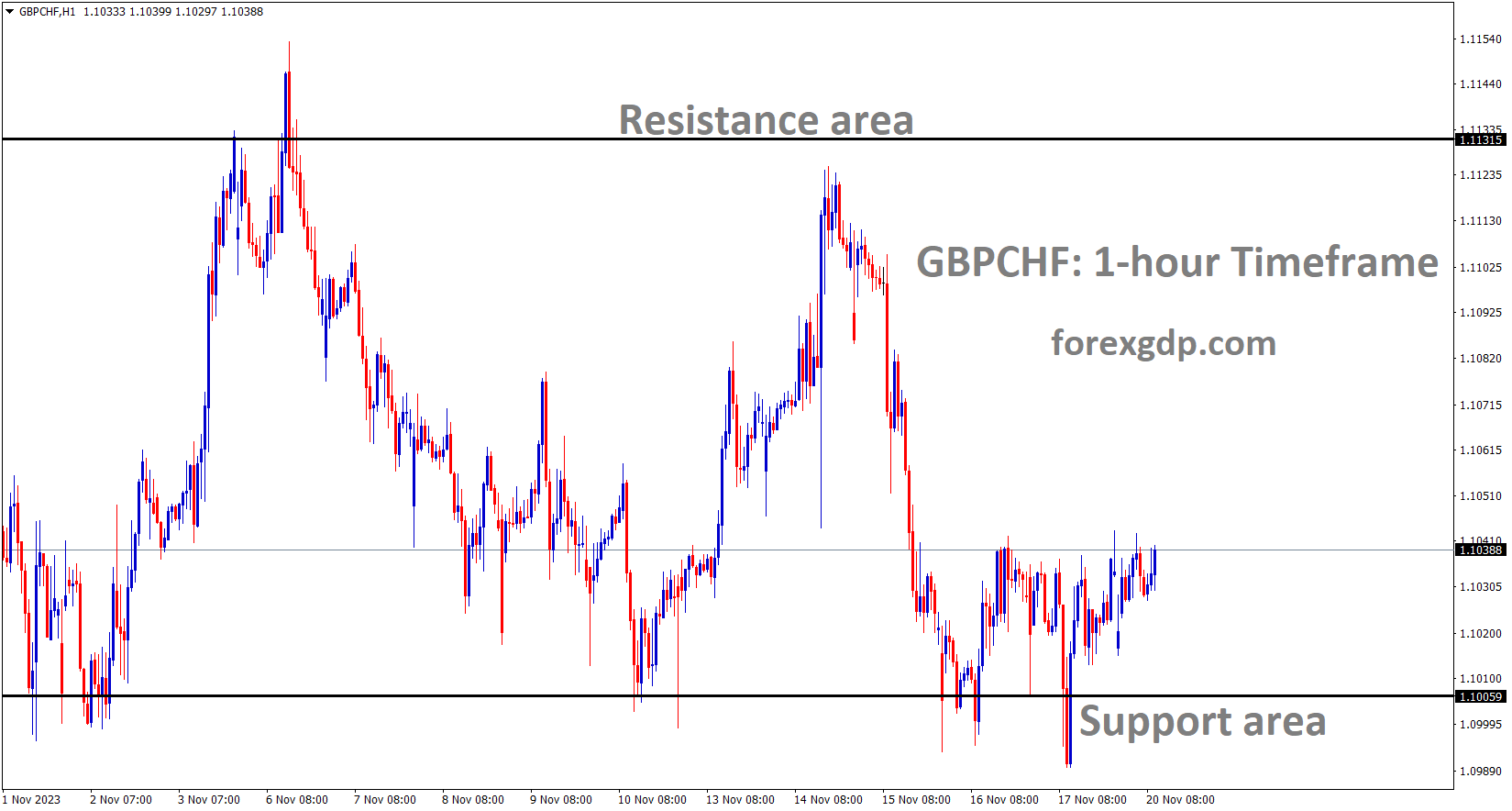
GBPCHF is moving in the Box pattern and the market has rebounded from the support area of the pattern
Swiss Industrial Production for the third quarter exceeded expectations at 2.0%, surpassing the previous quarter’s -0.7%. The revised figure for the previous quarter was marginally higher, changing from -0.8%.

This data indicates an improvement in Switzerland’s industrial output, positively influencing the Swiss Franc. Furthermore, Swiss National Bank Chairman Thomas Jordan’s hawkish comments, not ruling out the possibility of more interest rate hikes in the future, continue to bolster the strength of the Swiss Franc. The focus this Tuesday will be on the FOMC minutes, providing insights into the Fed committee’s decision to maintain rates, along with Swiss Import and Export data. These releases are anticipated to offer additional clarity on the economic outlook for both nations.
GBPUSD Analysis:
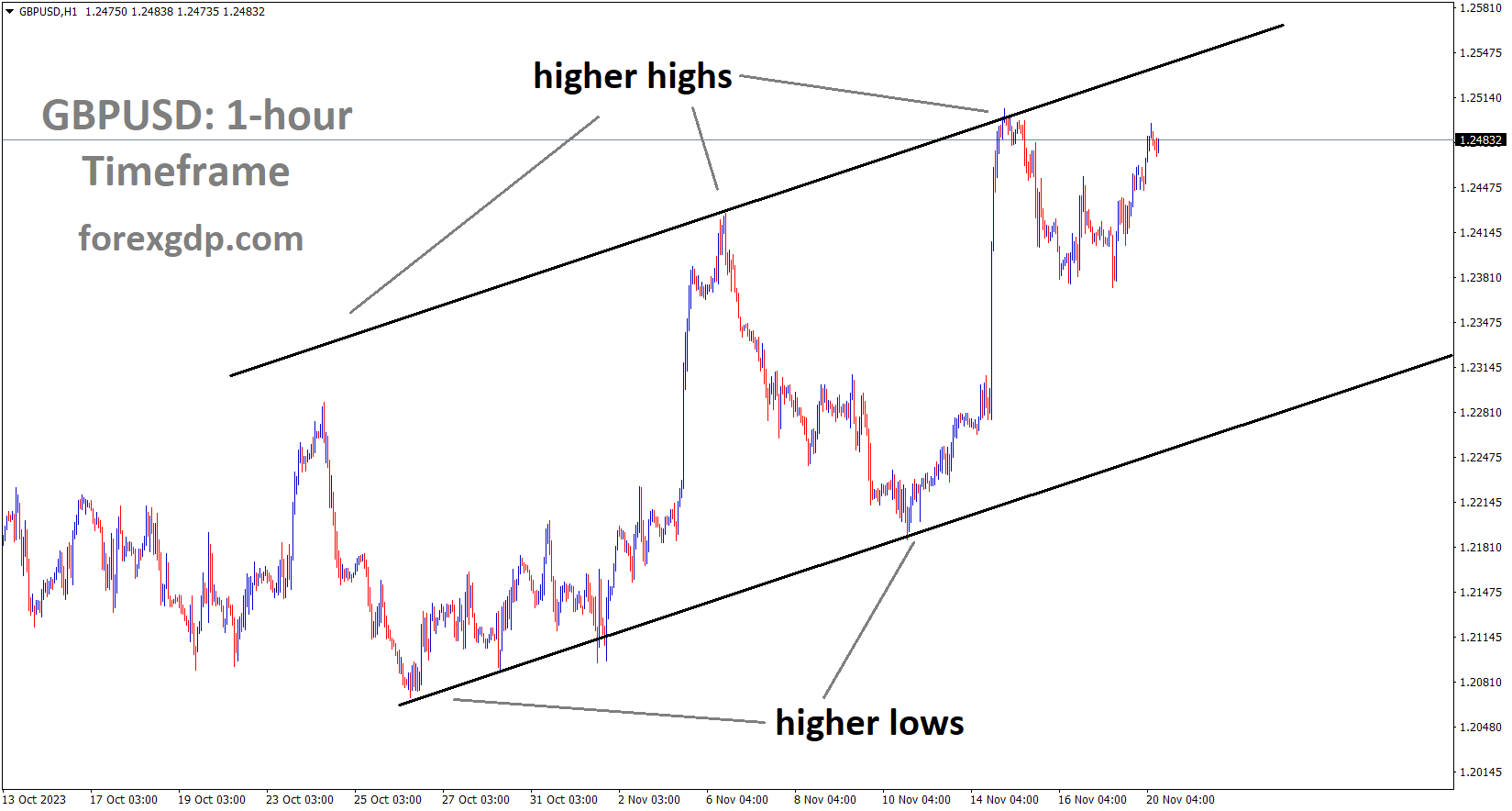
GBPUSD is moving in an Ascending channel and the market has reached the higher high area of the channel
The stability of GBP domestic data is at risk, as there is a high expectation for UK Prime Minister Rishi Sunak to fulfill his commitment to achieving a 5% inflation target in the near future.
The British Pound appears poised to begin the upcoming trading week notably stronger against the United States Dollar than it was at the start of the previous one. However, this ascent seems precarious, and betting on further gains may be imprudent. Like many other currencies, GBPUSD has capitalized on the growing market conviction that US interest rates will not rise this year and may potentially decrease in the first half of 2024. This sentiment gained significant support from the latest US inflation figures released last week, showing a decline in headline consumer price inflation to 3.2% in October from the previous month’s 3.7%, reinforcing the trend of weakening inflation since the end of the previous year.

While Sterling benefits from the narrative of ‘Dollar weakness,’ domestic economic news in the UK is less reassuring. Despite the Bank of England’s series of rate hikes over the past year to address higher inflation, signs of their effectiveness coincide with a noticeable impact on economic activity. Higher borrowing costs are constraining economic growth, even as the cost of living crisis may be abating. Official UK retail sales figures from last week highlighted this, depicting sales volumes at their lowest since February 2021, during the peak of the Covid-19 pandemic. Weather conditions and pre-Christmas spending constraints likely contributed to these figures, but the underlying economic outlook is concerning. Political instability adds another layer of uncertainty as Prime Minister Rishi Sunak faces challenges in asserting control over his party. Against this backdrop, the Pound may not be an attractive investment. This reality could reemerge this week, particularly as major scheduled risk events are sparse, and central bank meetings are on the horizon in mid-December. While the Pound may not experience a significant decline this week, the outlook for further gains in the near term appears challenging. Consequently, the sentiment leans towards a bearish outlook for the Pound this week.
EURUSD Analysis:
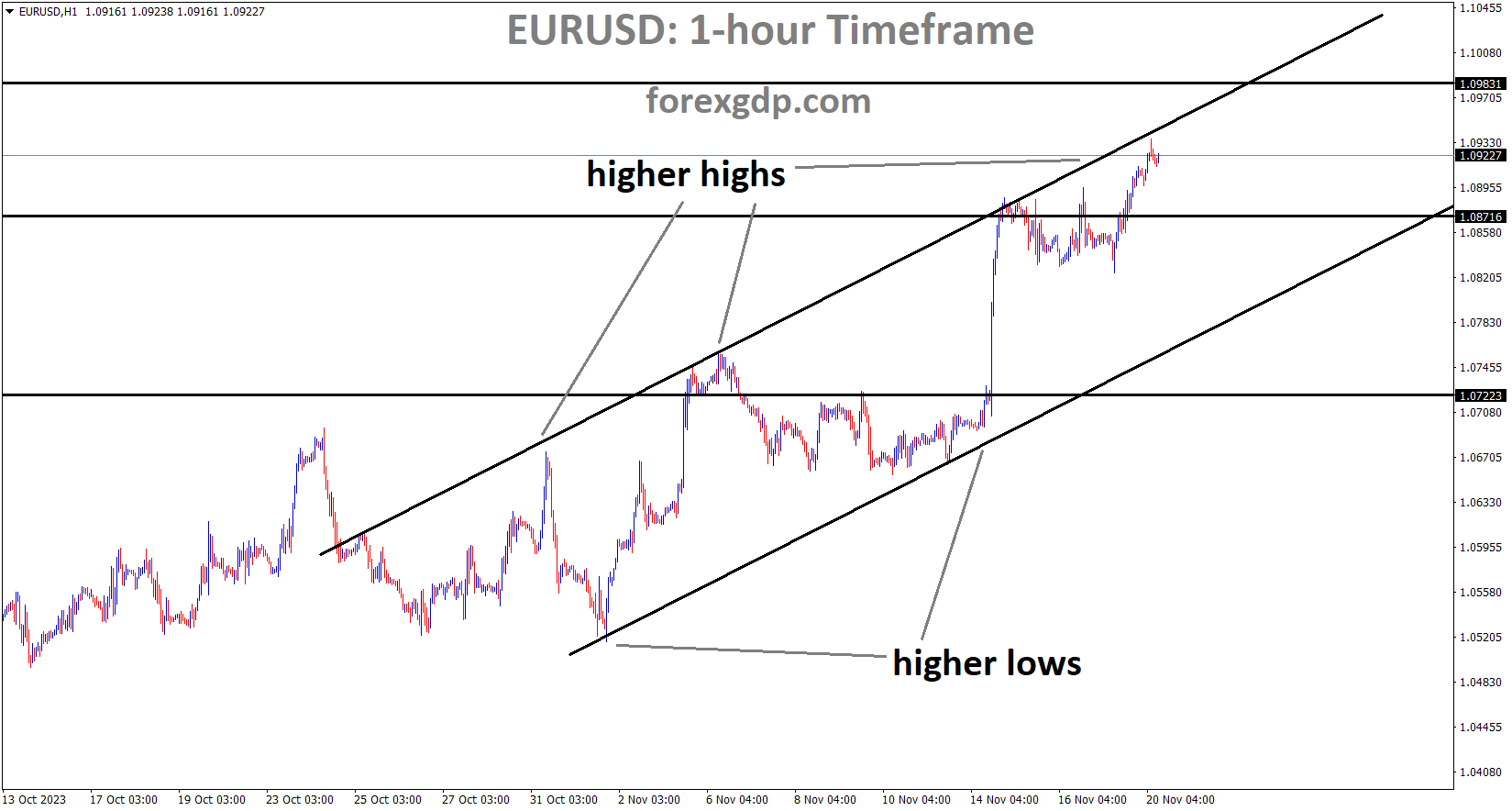
EURUSD is moving in an Ascending channel and the market has reached the higher high area of the channel
ECB policymakers have indicated that inflation is still not meeting our target; however, there is a possibility of a rate hike in the upcoming meeting.
The US Dollar initiates the new week with a rebound, recovering from Friday’s dip to a level not seen in over two and a half months. This recovery poses a challenge for the EURUSD pair. However, a substantial resurgence in the USD remains elusive, given the prevailing sentiment that the Federal Reserve has concluded its interest rate hikes. This belief is reinforced by US data indicating a more rapid cooling of inflation than expected. Furthermore, the markets are now factoring in the potential for rate cuts in the first half of 2024, contributing to a recent sharp decline in US Treasury bond yields. The benchmark 10-year US government bond yield reached a two-month low of 4.379% on Friday. Despite this, the Greenback’s appreciation is likely to be limited, given the stable performance in equity markets.

Conversely, the Euro may find continued support from hawkish statements made by European Central Bank officials on Friday, countering expectations for early rate cuts. Bundesbank President Joachim Nagel cautioned against initiating interest rate cuts too soon, and ECB policymaker Robert Holzmann argued that a rate cut in the second quarter was premature. This fundamental backdrop supports a positive short-term outlook for the EUR/USD pair, favoring bullish traders. Additionally, from a technical standpoint, the sustained breakout above the confluence barrier of the 100- and 200-day SMAs last week indicates that the path of least resistance for spot prices is upward. This is especially true in the absence of significant macroeconomic data from both the Eurozone and the US on Monday.
AUDUSD Analysis:
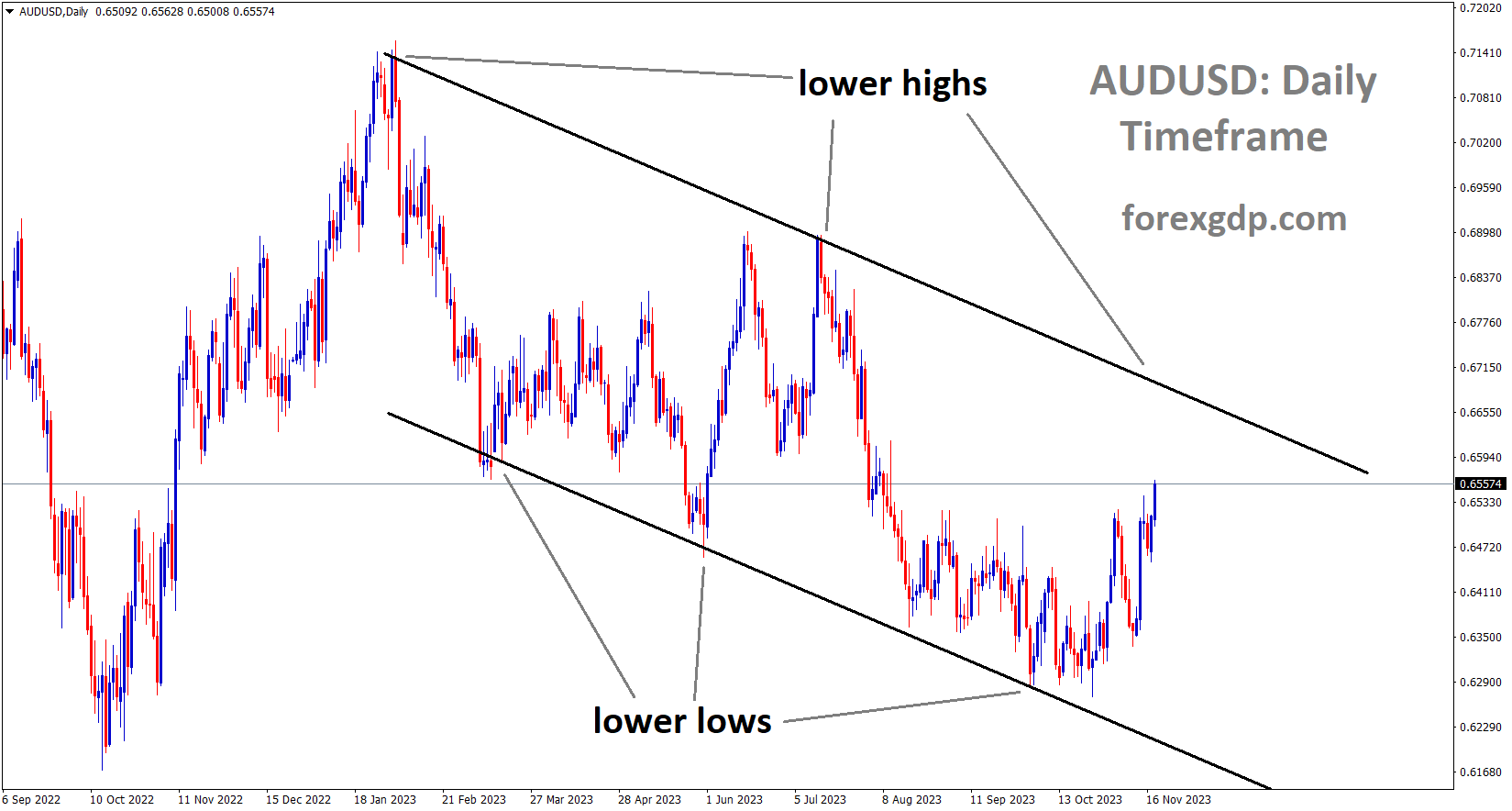
AUDUSD is moving in the Descending channel and the market has rebounded from the lower low area of the channel
The People’s Bank of China has maintained its interest rate at 3.45% today, and this development is favorable for the Australian Dollar.
The Australian Dollar found support following the People’s Bank of China’s decision to maintain its loan prime rate at 3.45%, in line with expectations. However, the AUDUSD pair encountered resistance as the US Dollar sought to recover from a two-month low reached on Friday. Anticipation of a potential interest rate hike by the Reserve Bank of Australia (RBA) in the first half of 2024 persisted. RBA Assistant Governor Marion Kohler noted that while inflation is expected to decrease, it is not projected to reach the RBA’s 2%-3% target until the end of 2025. Market attention is likely to focus on the RBA Meeting Minutes and a speech by RBA Governor Bullock on Tuesday.
The Australian Dollar received support amid weak US inflation figures and sluggish economic activity in the United States, contributing to a decline in the US Dollar. Signs of inflationary pressures and a cooling labor market led to speculation that the Federal Reserve (Fed) may have concluded its hiking cycle, leading to the Greenback’s weakness in the previous week.

The US Dollar Index continued its decline for the second consecutive session, influenced by pressure on US Treasury yields. Despite upbeat US housing data on Friday, including improved Building Permits and Housing Starts, the US Dollar faced downward pressure. Boston Federal Reserve President Susan Collins expressed optimism about the Fed’s ability to address inflation without significant damage to the labor market by adopting a “patient” approach to interest rate moves. The Federal Open Market Committee minutes on Tuesday are expected to provide insights into the Fed’s stance on inflationary pressure and its monetary policy approach.
In Australia, the seasonally adjusted Employment Change for October surpassed market expectations at 55K, compared to the anticipated 20K and the previous month’s 6.7K. The Aussie Unemployment Rate for October met expectations at 3.7%. Australia’s Wage Price Index grew as expected by 1.3%, exceeding the previous reading of 0.8%, with a year-over-year increase of 4.0%, surpassing the anticipated 3.9%.
Meanwhile, in the US, Continuing Jobless Claims for the week ending on November 3 reached the highest level since 2022 at 1.865M, while Initial Jobless Claims for the week ending on November 10 rose to 231K, above the expected 220K and marking the highest level in nearly three months. October’s US Consumer Price Index showed lower readings than expected, with the annual rate slowing to 3.2%, below the consensus forecast of 3.3%. The monthly CPI reduced to 0.0% from 0.4%, and the US Core CPI rose by 0.2%, below expectations, with the annual rate decreasing to 4.0% from 4.1%.
AUDNZD Analysis:
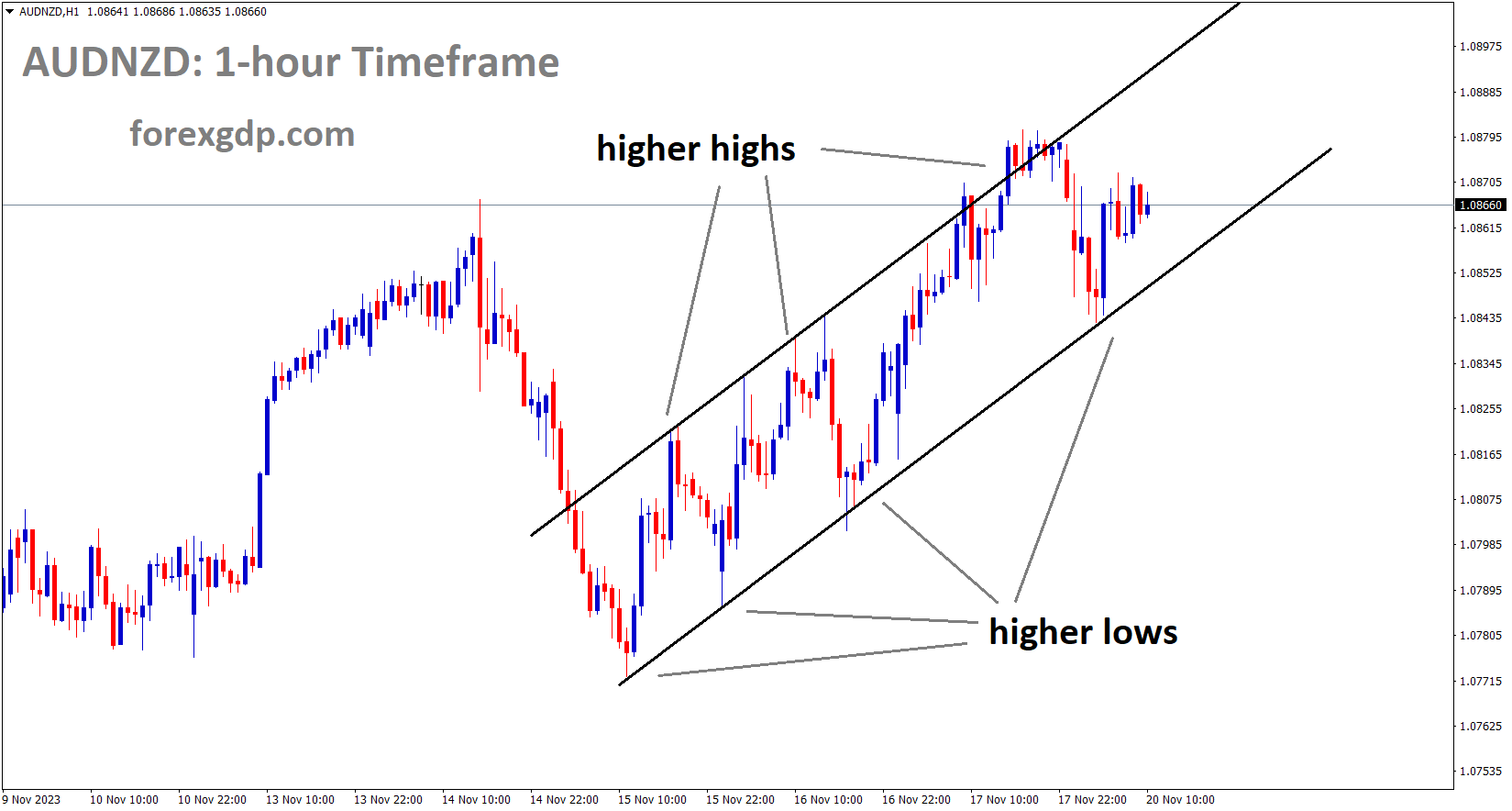
AUDNZD is moving in an Ascending channel and the market has rebounded from the higher low area of the channel
Due to the drop in oil prices, China opted to keep its rates unchanged, facilitating a smoother export scenario for the New Zealand economy. Consequently, the NZD Dollar strengthened against its counterparts.
The New Zealand Dollar exhibits a mixed performance at the week’s close, showing gains against the US Dollar, Euro, and Pound, but facing a decline against the strengthening Japanese Yen. Analysts at Danske Bank attribute the Yen’s strength to its historical performance during periods of global growth and inflation decline.
Across most pairs, the New Zealand Dollar is on the rise, except against the Yen. This trend follows recent inflation data from the US, Eurozone, and UK, which indicated slower-than-expected price increases. The subdued inflation numbers lessen the likelihood of central banks in these regions raising interest rates, impacting the demand for USD, EUR, and GBP. Typically, higher interest rates attract foreign capital, influencing currency demand.

The drop in oil prices, moving from the $90s per barrel to the $70s, is anticipated to contribute to a global reduction in inflation. The Kiwi might have experienced a boost in sentiment from China after a significant meeting between US President Joe Biden and Chinese President Xi Jinping in San Francisco. The decision to reopen communication channels between the two leaders, as reported by Reuters, potentially influenced the positive outlook for the New Zealand Dollar.
In contrast, the Yen outperforms the NZD based on various factors. The decline in oil prices supports the Japanese Trade Balance, as oil is a significant import. The Yen tends to thrive in environments characterized by declining growth and inflation. Investors speculate that peak interest rates have been reached in the US, suggesting a narrowing yield differential between the two countries. This could reduce the use of the JPY as a funding currency in the carry trade to purchase US Dollars.
Don’t trade all the time, trade forex only at the confirmed trade setups.
Get more confirmed trade setups here: forexgdp.com/buy/

